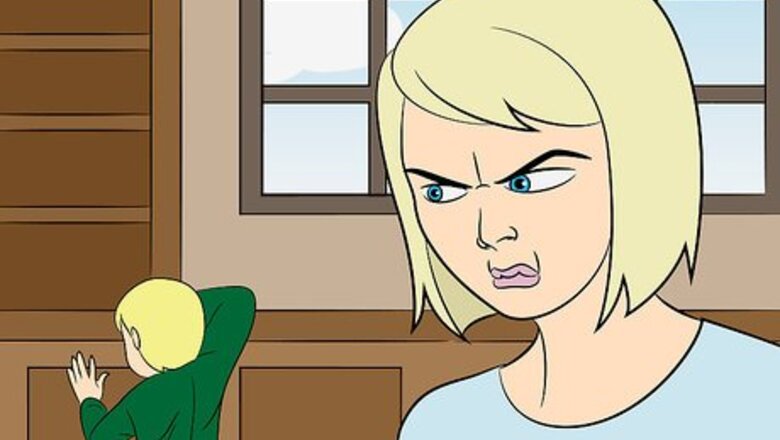
views
X
Trustworthy Source
Centers for Disease Control and Prevention
Main public health institute for the US, run by the Dept. of Health and Human Services
Go to source
Children age three and under make up three-quarters of these ER cases, and a significant number of them involve household chemicals (some one-third involve bleach).[2]
X
Research source
To protect kids from household chemicals, ongoing vigilance is your best defense, combined with smart storage, reducing potential chemical dangers in your home, and knowing what to do in an emergency.
Keeping Chemicals Away from Kids

Keep your eye on the kids. Even small children can be very resourceful, crafty, and determined when they want to get their hands (or mouths) on something. They have been known to defeat safety measures on storage cabinets and on chemical product containers. They cannot, however, overcome an observant pair of eyes from a supervising adult. Supervision is your first line of defense, but no one can keep their eyes on one or more kids all the time. Use additional household chemical safety measures in coordination with your observational skills.
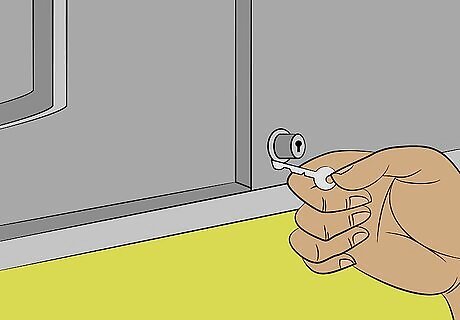
Store household chemicals in elevated, locked cabinets. When it comes to storing household chemicals in a child-safe manner, “out of sight, out of mind” should be your mantra. Keep chemical containers out of reach, out of view, and, whenever possible, behind a locked door. Even if you add a child-proof lock to the doors, the cabinet under your sink is not a great place to store household chemicals (including dishwasher detergent). A locked cabinet that is also out of a child’s reach is a much safer option. Who says you can’t store your holiday dishware under the sink and your household cleaners on the upper shelf of a (locked) upper kitchen cabinet?
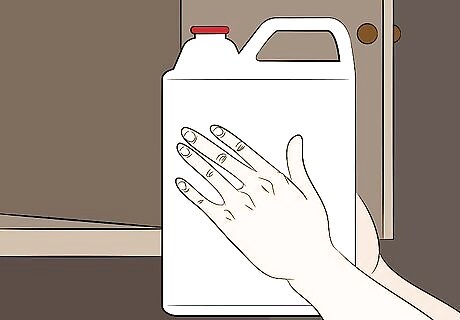
Return chemical containers to their storage locations as soon as you finish dispensing or using them. An elevated, locked storage cabinet is only a useful safety measure if your dangerous household chemicals are actually inside it. Keep a chemical product container either in your possession or in the locked cabinet at all times; never leave it on the counter, table, etc., even for a few moments. Don’t leave the laundry detergent container on top of the washer or in the clothes basket between loads. Put the drain cleaner bottle away each time, even if you know you’ll need to use it multiple times to bust a tough clog. Pay extra attention to laundry and dishwasher detergent pods or packs, as they can look and smell like candy.

Keep chemicals in their original containers. Whatever your reasoning may be — dividing a heavy bottle of bleach into two smaller juice bottles, putting insect killer in an empty window cleaner bottle because the nozzle on the bug spray broke, etc. — it is always a bad idea to store any chemical in a container other than the one it came in. You might forget what’s in there, you might cause a chemical reaction with residues in the new container, you lose the benefits of all the warnings and information on the original container, and the list goes on. Never under any circumstances use an empty food container to store chemicals, no matter how well you label it with a marker. You have to make sure that kids don’t associate household chemicals with food, so don’t add any amount of additional confusion. Keep dangerous chemicals in the original containers with all the warnings, and add (and explain) a “Mr. Yuk” or similar warning sticker for added effect.
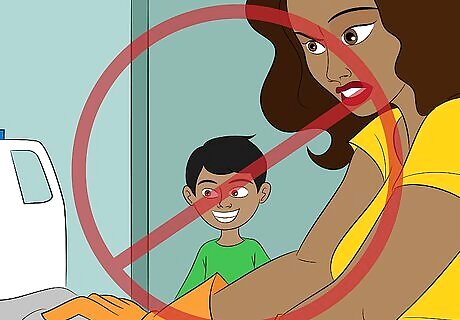
Avoid using household chemicals in front of your kids. You do want kids to understand that household chemicals have particular uses (by grown ups alone), so you can explain to them that you’re going to use the product to whiten the clothes, clean the toilets, etc. However, to prevent any unexpected and unwelcome “assistance” from your kids, it is best to use the product when they are not present. Also, small children are more sensitive and susceptible to chemical fumes, so remove them from the area and make sure you ventilate the room properly when using household chemicals. Really, for a host of reasons (including their safety and your sanity), it may be best to clean the house with various chemicals while the kids are visiting grandpa’s house.
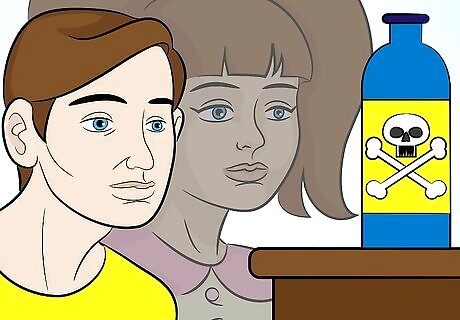
See things from a child’s perspective. You might feel a bit silly crawling around on your hands and knees in the laundry room, kitchen, or wherever else household chemicals are stored. However, getting the same view of things that a small child has can help you catch weaknesses in your household chemical protection plan that you might not otherwise notice. An unlocked upper cabinet that you thought was out of reach may not be. A shelf that you thought kept chemical bottles out of view may be easy to see. You may even find that the mouse poison block you thought was well out of view and reach between the cabinet and the fridge isn’t so inaccessible after all. Try to think like a kid too. Does your container of laundry detergent “pods” look a bit like a candy jar? Do your spray bottles remind you of the kids’ water pistols?
Reducing the Chemicals in Your Household
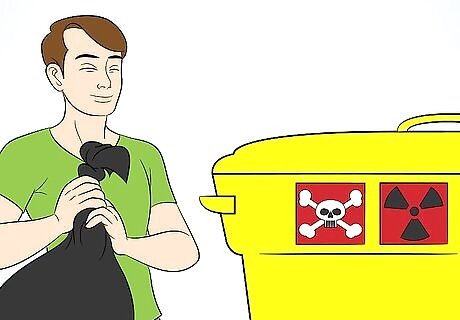
Don’t keep what you don’t need. Do you have an old bottle of weed killer in your garage even though you started hiring a lawn service years ago? Is your cleaning cabinet full of old bottles with so-small-it’s-useless amounts of cleaners left in them because getting rid of them would be “wasteful”? A child can’t be injured by a household chemical that isn’t there to be found, so only keep around the products that you use regularly and get rid of the rest. When disposing of superfluous household chemicals, follow the instructions on the package or contact your waste disposal provider or water and sewage authority. Don’t just pitch bottles into the trash or dump them down the drain without knowing the best disposal practices.
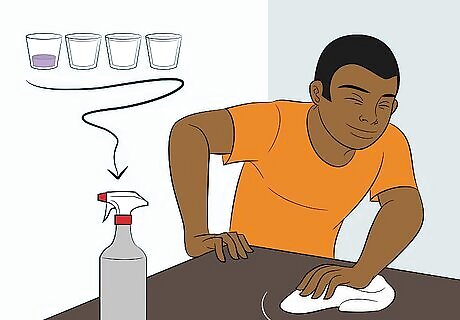
Use as little as possible. Whether you’re cleaning the oven or scrubbing the tub, using a little less cleaner and a little more “elbow grease” usually can provide the same results while reducing the amounts of chemical fumes and residues in your home. It is more thrifty and (more importantly) safer to use only as much of a household cleaner as is necessary to get the job done. Mixing household chemicals together is always a bad idea, but adding water to water-based cleaners (like glass cleaners, for instance) can be beneficial in multiple ways. You’ll probably find that the cleaner works just as well and lasts much longer. Also, a diluted cleaner has less concentrated fumes and amounts of the chemicals inside, which may make them safer around kids.
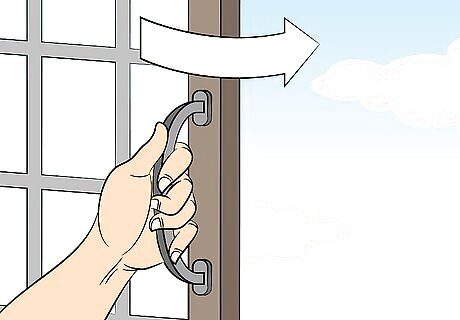
Ventilate the area when using chemicals. Because of their smaller bodies and lungs, amounts of chemical fumes in the air that you might only find annoying or uncomfortable may be very harmful to small children. Always make sure to open a window or use an exhaust fan when dispensing or applying household chemicals, especially those with noticeable fumes. Keep in mind that the “fresh, clean scent” created by your favorite household cleaner is usually caused by chemicals. Some kids may react negatively to these fumes as well. Remember that “clean” doesn’t have to smell like anything.
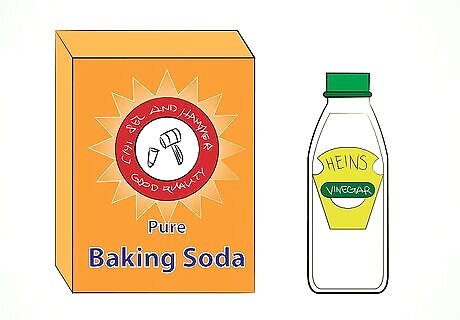
Use less hazardous alternatives. If you think that baking soda and vinegar are only good for making science fair volcanoes, think again. These common household items, along with others like lemon juice, salt, and just plain old water, can be used to make a range of surprisingly effective household cleaners that also happen to be much safer to store and use around kids. You may also consider purchasing natural or eco-friendly products. These products may still be a hazard to your child, but they are less hazardous than products made with harsh chemicals. Equal parts of white vinegar and clean water, for instance, make a window cleaner every bit as effective as the ones found in stores. You can find a host of other homemade cleaning recipes online. Remember that “homemade” does not automatically equal “safe” or “healthy,” though. Continue to store your homemade cleaners behind locked doors, in clearly-labeled, previously unused containers (such as empty spray bottles you can buy at the store). Try eco-friendly cleaners such as Seventh Generation and Ecover. Some big cleaning product companies also make eco-friendly versions of their cleaners, such as Lysol.
Preparing for Emergencies
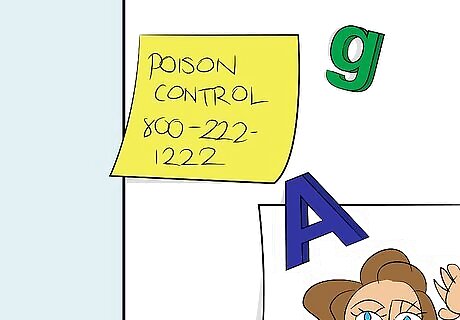
Know your poison control and emergency services numbers. Time is of the essence when a child is exposed to dangerous chemicals. You don’t have time to waste searching for the local poison control hotline number. Save it in your mobile phone, and display it prominently near your home phone and/or where you store the chemicals. In the U.S., for example, the nationwide poison control number is 800-222-1222. Call this number if there has been a chemical exposure and the person is conscious and alert. If the exposed person is unconscious, call 911 (anywhere in the U.S.) or the emergency services number in your country.
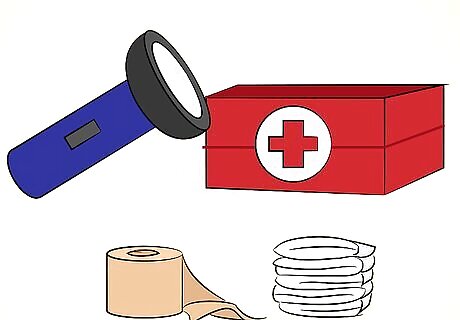
Have lifesaving techniques and supplies at the ready. No matter how well you safeguard your household chemicals, never assume that a chemical exposure incident can’t happen in your home. Be prepared not only by knowing what phone number to call, but by learning techniques that could potentially save a child’s life. If you have kids, are going to have kids, or regularly watch or supervise kids, you should learn CPR for infants, children, and adults, as well as infant and child/adult versions of the Heimlich maneuver (for choking). Take a class and refresh your knowledge every few years. Make sure you have a well-stocked first aid kit in your home at all times.

Take fast action when exposure occurs. Calling poison control or emergency services should always be either the first or among the first things you do when a hazardous chemical exposure occurs. There are, however, additional actions you can take that can provide immediate treatment for various types of chemical exposure. If poison is swallowed, call poison control and only induce vomiting if they tell you to do so. If a hazardous chemical gets in a child’s eyes, flush the eyes with water for fifteen minutes while (whenever possible) someone else contacts poison control. If the skin is exposed to a hazardous chemical, drench the area with clean water, remove any contaminated clothes, and thoroughly wash the area with soap and water. If dangerous chemicals are inhaled, get the person into fresh air immediately. Drag or carry an unconscious child outside and start CPR if necessary.




















Comments
0 comment